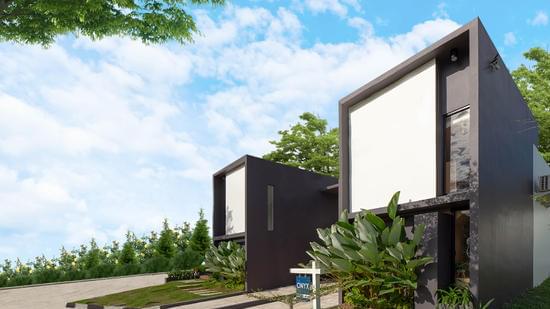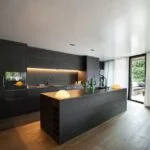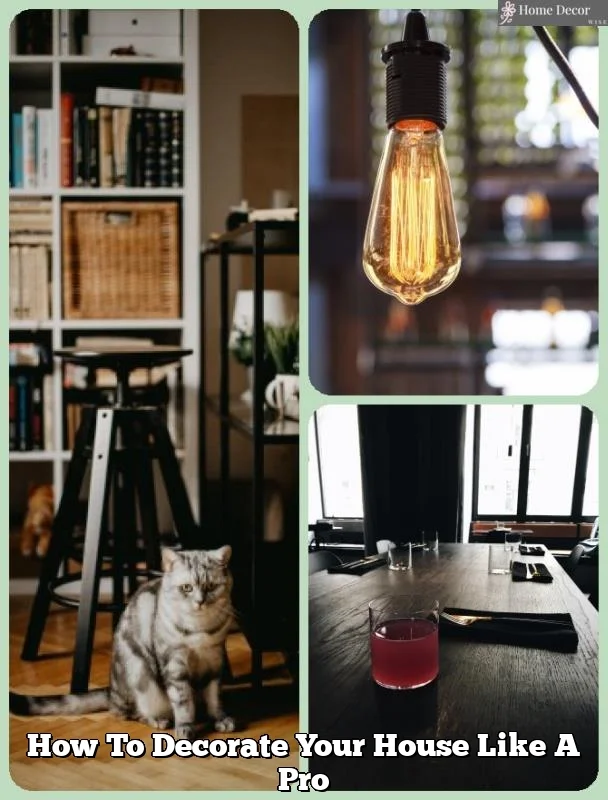Step into the past and discover the allure of decorating a 1900 home. Embracing the historical features, finding the perfect balance between modern and vintage, selecting furniture and decor that complement the period, and adding personal touches are just a few elements that contribute to reviving the charm of a turn-of-the-century home.
Decorating a 1900 home provides an opportunity to honor its history while infusing personal style. From utilizing original architectural elements to choosing authentic color palettes, there are various ways to evoke the elegance of the time period while adding individual flair.
In this article, we will explore tips and techniques for decorating a 1900 home, including selecting furniture and decor, incorporating authentic color schemes and patterns, choosing appropriate lighting fixtures, selecting textiles and upholstery that resonate with the era, and adding final touches that showcase personal style. Join us on this journey as we delve into the enchanting world of decorating a 1900 home.
Embracing the Historical Features
When decorating a 1900 home, one of the most charming aspects is the opportunity to highlight and incorporate its original architectural features. From intricate trims and moldings to grand staircases and stained glass windows, these elements are what make a century-old home truly special. To fully embrace the historical significance of these features, it’s important to ensure that they become the focal point of your interior design.
One way to maximize these original elements is by carefully restoring and preserving them. Refinishing woodwork, repairing damaged ornamental details, or simply accentuating them with subtle lighting can help bring out their full beauty. It’s also essential to use furniture and decor that complement these architectural elements rather than compete with them or overshadow them. This means selecting pieces that not only fit the era but also enhance the unique character of your 1900 home.
In addition, it’s wise to seek inspiration from magazines, online resources, or even historic home tours to see how others have successfully integrated original architectural features into their decor. By doing so, you can gather ideas on how to create a cohesive look for your own home that respects its history while still reflecting your personal style.
| Original Architectural Element | Ways to Highlight |
|---|---|
| Stained Glass Windows | Use subtle lighting fixtures |
| Intricate Trims and Moldings | Restore and emphasize with compatible furniture |
| Grand Staircases | Select decor that complements rather than competes |
Finding the Perfect Balance
When decorating a 1900 home, it’s crucial to find the perfect balance between incorporating modern touches and preserving the vintage feel of the property. Here are some tips on how to achieve this seamless blend of old and new:
1. Mix vintage and modern furniture: One way to strike a balance is by mixing vintage furniture with modern pieces. For example, you can pair a sleek, contemporary sofa with a classic, antique coffee table. This juxtaposition creates an eclectic and visually interesting space.
2. Update fixtures and appliances: While it’s important to preserve the historical features of a 1900 home, updating fixtures and appliances can seamlessly blend modern convenience with vintage charm. Consider installing vintage-inspired lighting fixtures or swapping out outdated appliances for energy-efficient, modern ones that mimic the look of antiques.
3. Use contemporary art and decor: Incorporating contemporary art and decor into a 1900 home can add a fresh, modern touch while still honoring its history. Hang bold, modern artwork on the walls or display sleek sculptures alongside heirloom antiques to create an interesting contrast.
By integrating these tips into your decorating approach, you can effortlessly infuse your 1900 home with both timeless charm and contemporary appeal.
Furniture and Decor
When it comes to decorating a 1900 home, selecting the right furniture and decor is crucial in maintaining the authenticity and charm of the era. Here are some tips on how to choose pieces that complement the period of your home:
- Research the time period: Before purchasing furniture and decor, it’s important to do some research on the design styles and popular materials used during the early 1900s. This will help you identify pieces that are true to the era and avoid incorporating anachronistic items.
- Antique shopping: One of the best ways to find authentic furniture for a 1900 home is by visiting antique shops, estate sales, and flea markets. Look for pieces made from wood such as oak, mahogany, or walnut, as these were commonly used during that time.
- Incorporate vintage accents: To add character to your home, consider including vintage accessories such as art deco mirrors, porcelain vases, or stained glass windows. These small details can make a big difference in capturing the essence of the early 1900s.
By following these tips on selecting furniture and decor that complements the period of your 1900 home, you can create a space that feels authentic and true to its historical roots.
Color Scheme and Wallpaper
When it comes to decorating a 1900 home, one of the most important aspects to consider is the color scheme and wallpaper. Reviving the era with authentic color palettes and patterns can really help bring out the historical charm of the home. In this section, we will explore how to choose the right colors and wallpaper designs that are true to the time period while still fitting within a modern context.
Authentic Color Palettes
To truly capture the essence of a 1900 home, it’s essential to use authentic color palettes that were popular during that time. Colors such as deep reds, rich greens, and warm earth tones were commonly used in interior design during this period. Choosing paint colors that reflect these historic tones can instantly transport your home back in time while adding depth and character to the space.
Historical Wallpaper Patterns
In addition to selecting the right paint colors, incorporating historically accurate wallpaper patterns can further enhance the vintage look of a 1900 home. Look for wallpapers with intricate floral designs, ornate damasks, and classic geometric patterns that were popular at the turn of the century. By embracing these authentic wallpaper styles, you can create a sense of nostalgia and elegance within your home.
Modern Interpretations
While it’s important to stay true to historical color palettes and patterns, there is also room for modern interpretations. Many companies now offer wallpapers that mimic vintage designs but with a contemporary twist. These options allow homeowners to blend old-world charm with modern sensibilities, creating a unique aesthetic that honors the past while staying relevant for today’s living.
By carefully selecting authentic color schemes and wallpaper patterns while also incorporating modern touches, you can effectively revive the era within your 1900 home without sacrificing comfort or style. This attention to detail in choosing colors and wallpapers will undoubtedly contribute to preserving the historical integrity of your home.
Lighting
To maintain the authenticity of a 1900 home, it is essential to choose lighting fixtures that reflect the design style popular during that era. This could involve opting for fixtures with ornate details, stained glass elements, brass or copper finishes, and intricate shapes that were characteristic of the period. Incorporating these vintage-inspired lighting pieces can effortlessly transport your home back in time while still being functional for contemporary use.
When planning how to decorate a 1900 home with lighting, it’s important to understand that different rooms may require different types of lighting. For example, accent lighting can be used to showcase architectural features like moldings and decorative ceilings, while task lighting is essential in areas where specific activities are carried out such as reading corners or kitchen workspaces. Additionally, ambient lighting can be utilized to create an overall inviting atmosphere throughout the space.
| Characteristics | Examples |
|---|---|
| Ornate Details | Ceiling medallions |
| Stained Glass Elements | Tiffany lamps |
| Brass or Copper Finishes | Pendant lights |
Textiles and Upholstery
When it comes to decorating a 1900 home, selecting the right textiles and upholstery is crucial in evoking the elegance and charm of the time period. Whether it’s the draperies, upholstery, or throw pillows, choosing fabrics that reflect the style of the early 20th century can truly transform the look and feel of your home.
Authentic Fabrics
To truly capture the essence of a 1900 home, consider using authentic fabrics that were popular during that time period. Fabrics such as velvet, brocade, damask, and lace were commonly used in upholstery and draperies. These luxurious materials not only add a touch of elegance to your decor but also help to recreate the ambiance of a bygone era.
Vintage Patterns
Incorporating vintage patterns into your textiles can also enhance the historical feel of your home. Look for floral prints, intricate designs, or geometric patterns that were popular during the early 1900s. Whether it’s on curtains, upholstery, or even wallpaper, these vintage patterns can transport your space back in time.
Elegant Upholstery
When selecting upholstery for furniture pieces in a 1900 home, opt for elegant and timeless fabrics such as silk, satin, or leather. These materials not only exude sophistication but also complement the overall aesthetic of the era. Consider reupholstering antique pieces with these fabrics to maintain their authenticity while adding an elegant touch to your decor.
By carefully selecting textiles and upholstery that evoke the elegance of the time period, you can breathe new life into your 1900 home while preserving its historical charm. These fabric choices will not only honor the history of your home but also create an inviting and stylish space for you to enjoy.
Final Touches
In conclusion, decorating a 1900 home presents a unique and exciting opportunity to embrace the charm of a bygone era while infusing personal style into the space. By carefully selecting furniture, decor, color schemes, and textiles that complement the historical features of the home, one can create a beautiful and harmonious living environment that pays homage to its heritage. Finding the perfect balance between old and new is key in creating a timeless and elegant atmosphere within a 1900 home.
One of the essential aspects of decorating a 1900 home is paying attention to final touches. This includes adding personal flair and individual style while still honoring the history of the home. Whether it’s through artwork, accessories, or personalized decor elements, these final touches can truly bring the space to life and make it feel like home.
Ultimately, knowing how to decorate a 1900 home involves understanding and appreciating the significance of historical elements, while also having the creativity to infuse modern touches in an authentic manner. By following this approach, homeowners can create spaces that not only reflect their own taste and personality but also preserve the beauty and character of these timeless homes for future generations to enjoy.
Frequently Asked Questions
How to Decorate an Early 1900s House?
Decorating an early 1900s house involves embracing the historical charm of the period. You can start by restoring any original features such as woodwork or hardware, and choosing decor that reflects the era’s aesthetics.
What Was the Interior Design Style of the 1900s?
The interior design style of the 1900s was influenced by various movements such as Arts and Crafts, Art Nouveau, and Art Deco. Common features included elaborate patterns, rich colors, and a mix of traditional and modern elements.
How Can I Make My Old House Look Good?
Making your old house look good involves preserving its unique character while making necessary updates. Consider restoring original architectural details, adding vintage-inspired decor, and investing in quality craftsmanship for any renovations.

I’m thrilled to be your companion on this exciting journey through the world of home decor and design. With a passion for turning houses into homes and a keen eye for the finer details, I’m here to help you transform your living spaces into beautiful, functional, and meaningful havens.





